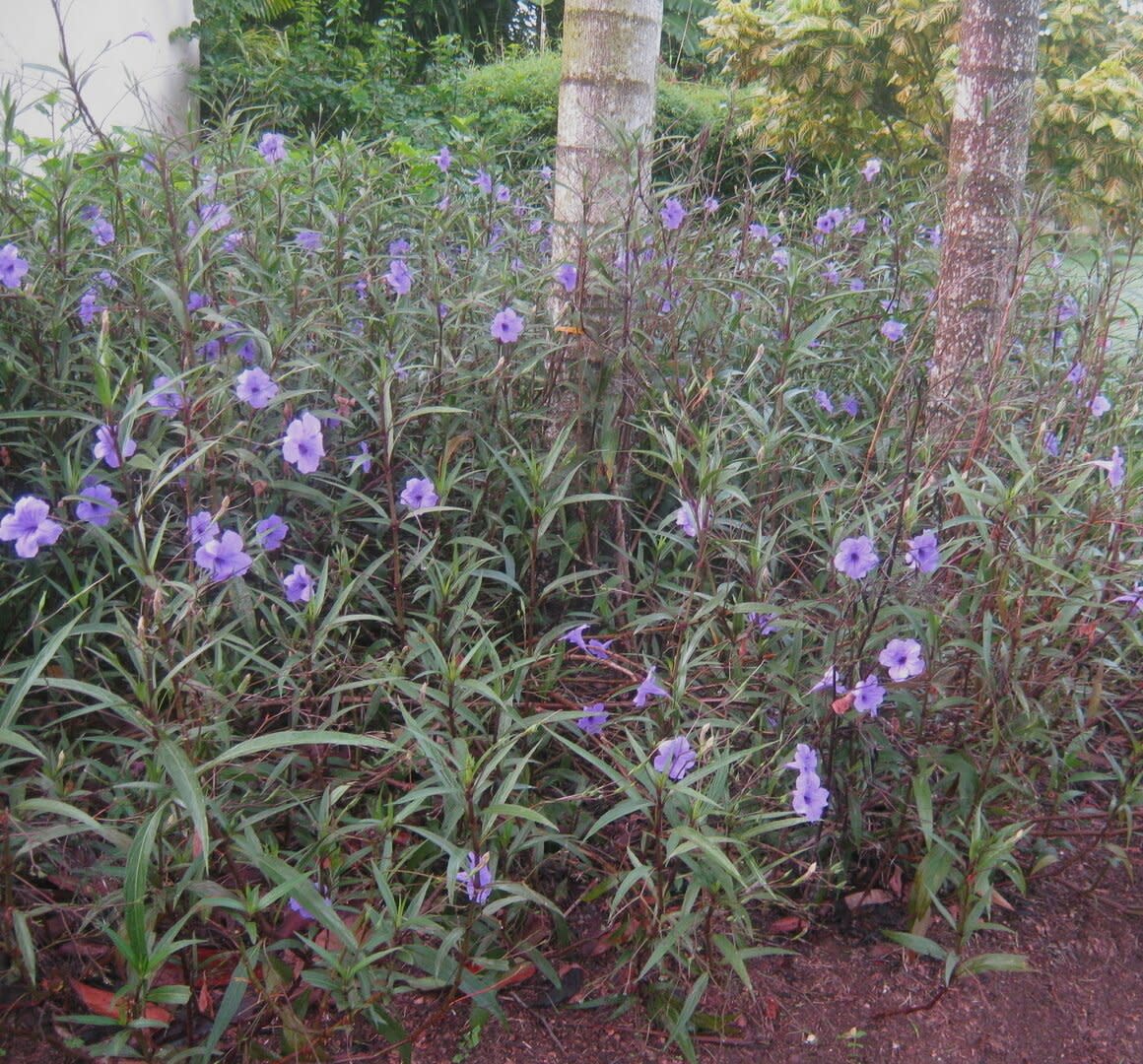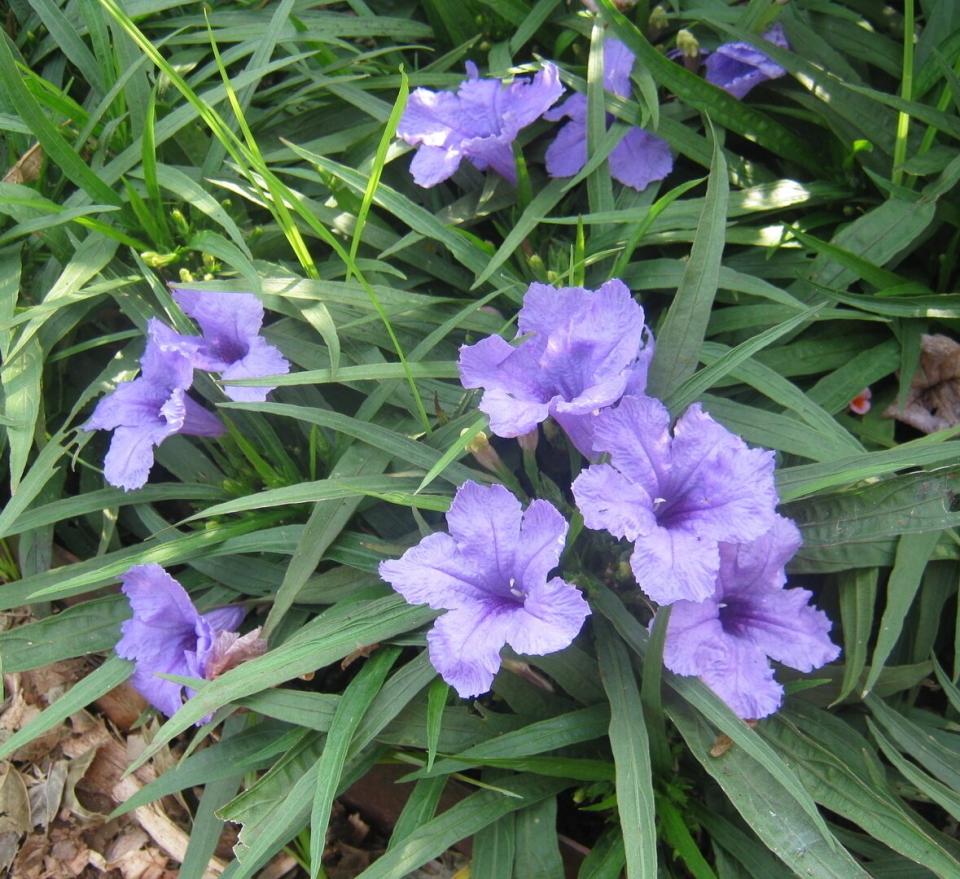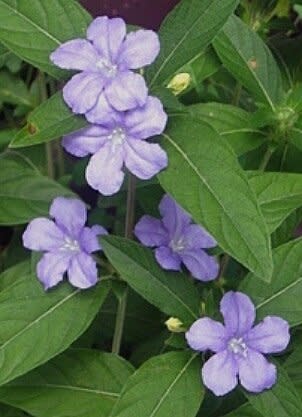Mexican Petunia: The Resilient Perennial That Will Bloom Just About Anywhere

When you see a plant blooming its head off in a strip of compacted dirt between a parking lot and concrete wall in rainless, nasty July, you know it's a tough customer. That's just one of the reasons people love Mexican petunia.
What is Mexican Petunia?
As its name implies, Mexican petunia, also known as Mexican bluebell or Britton's petunia, comes from south of the border—native to Mexico, as well as Western South America and the Antilles. They can now be found in a handful of Southern states, Hawaii, Puerto Rico, and the Virgin Islands. Mexican petunia is not a real petunia, but its flower looks like one. The accepted botanical name is Ruellia brittoniana, but you'll also see it called R. malacosperma and R. tweediana. However, taxonomists have begun to use the name Ruellia simplex. Some folks say these are different plants and others say they are one and the same.
Cold-hardy in USDA Zones 8 to 11 and southward, Mexican petunia grows three to four feet tall with attractive, purplish stems and narrow, lance-shaped leaves about six to 12 inches long. Showy blue or purple flowers—beloved by butterflies, hummingbirds, bees, and other pollinators—appear from early summer through the fall. The flowers grow in the shape of trumpets and can either bloom individually or in clusters.
How to Care for Mexican Petunia
Mexican petunia is able to grow in a variety of environmental conditions, including in differing sunlight, temperature, and moisture. It is incredibly easy to grow in full to partial sun. It's one of the few perennials that grows equally well in wet soil and dry soil, and it will typically grow to be one to four feet tall and similarly in width. I often see it thriving in traffic islands, gas station plantings, and strips between sidewalks and the curb where it gets absolutely no care. And as mentioned before, butterflies and hummers covet it. Individual flowers last for only one day, but there are always new flowers opening. Furthermore, its seed production is rather abundant and the seedlings have a high germination rate, with the ability to take root in both light and dark conditions.
The fact that this plant is a survivor means it can get out of hand. It has a rapid growth rate and forms large clumps by spreading roots that are hard to kill and difficult to remove. These roots are typically large, horizontal-growing roots that often peek above ground. And its exploding seed capsules scatter seedlings far and wide. In wet climates and unmanaged areas, it can be invasive. Indeed, Florida and a few other states consider it as such, although I hardly think it ranks up there with kudzu, popcorn tree, privet, and water hyacinth. Its aggressive rate of growth and difficulty to remove has even resulted in it being banned in some states.
So should you still plant it? Yes, as long as it's not banned in your state and you make sure to plant types that are not invasive. Fortunately, a few are now available in garden centers and mail-order nurseries.

Non-Invasive Petunias
Here's the first one. It's a dwarf called 'Katie.' It grows about 10 inches high and 12 inches wide. It sets few seeds and is not an aggressive spreader. Large, blue-purple flowers appear from June until frost. This is a good one for massing as a ground cover. Niche Gardens is a good mail-order source.
A second Mexican petunia to consider is 'Purple Showers.' It looks a lot like the plant pictured up top, but has larger, deep purple flowers. Developed by the University of Florida, 'Purple Showers' is sterile, so it sets no seed. However, it still can spread by roots, so don't plant it in wet soil. You can order this one from Avant Gardens. It's also available at big-box stores.

Your third choice is to go native and plant a charming little species indigenous to the Midwest and South called Carolina wild petunia (R. caroliniensis), pictured above in my garden. It grows only a foot tall and blooms off and on all summer. It will spread by seed somewhat, but not enough to be annoying. And it's just as tough as Mexican petunia. I got mine from Jean in Tennessee, who's a wonderful person despite being a die-hard Volunteer fan (Oh, the shame!). You can order it from Woodlanders. It does well for me in sun and light shade and is more cold-hardy than Mexican Petunia.

